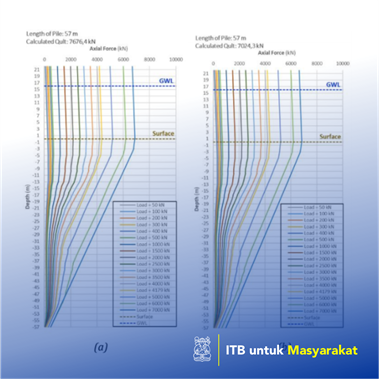

Endra Susila
Differential settlement was one of the aspects considered in planning the foundation of a building. Therefore, the accuracy of the prediction of settlement in the pile group would be very crucial. Furthermore, in determining the type of soil layer, the classification standard that is commonly used is the USCS classification standard. However, in the course of designing, it was impossible to classify a layer of soil as clay without containing sand at all and the other way around. We need to consider all possible behaviors. As in actual conditions in the site, a layer of soil usually did not consist of just one type of soil, such as clay or sand alone. For example, a soil layer was classified as clayey sand, then how to represent it in design calculations, especially in long-term behavior, such as settlement consolidation. For small scale constructions, this might not have an effect. However, for large-scale constructions, this would have a dangerous effect. Therefore, the general objective of this study was to determine the behavior of settlement on the foundation in soil conditions that were dominated by soft soil based on monitoring data from site testing results.
Penerapan Karya Tulis
There are many cases where the piles are on soils that are dominated by soft soil or in soil conditions where the soft clay soil is thick enough and the hard soil is at a deep depth. One of these was found at the new international port in Mempawah which was designed to facilitate the loading and unloading of large vessels. In this soil condition, the pile needs to be driven through the soft soil layer to a certain depth. Most of the resistance of these piles came from skin friction so that these piles were called friction piles. Moreover, in this condition there was a possibility that the pile would not be driven until the final set. The thickness of the soft soil and the depth of the hard soil caused a considerable potential for settlement if not properly anticipated.